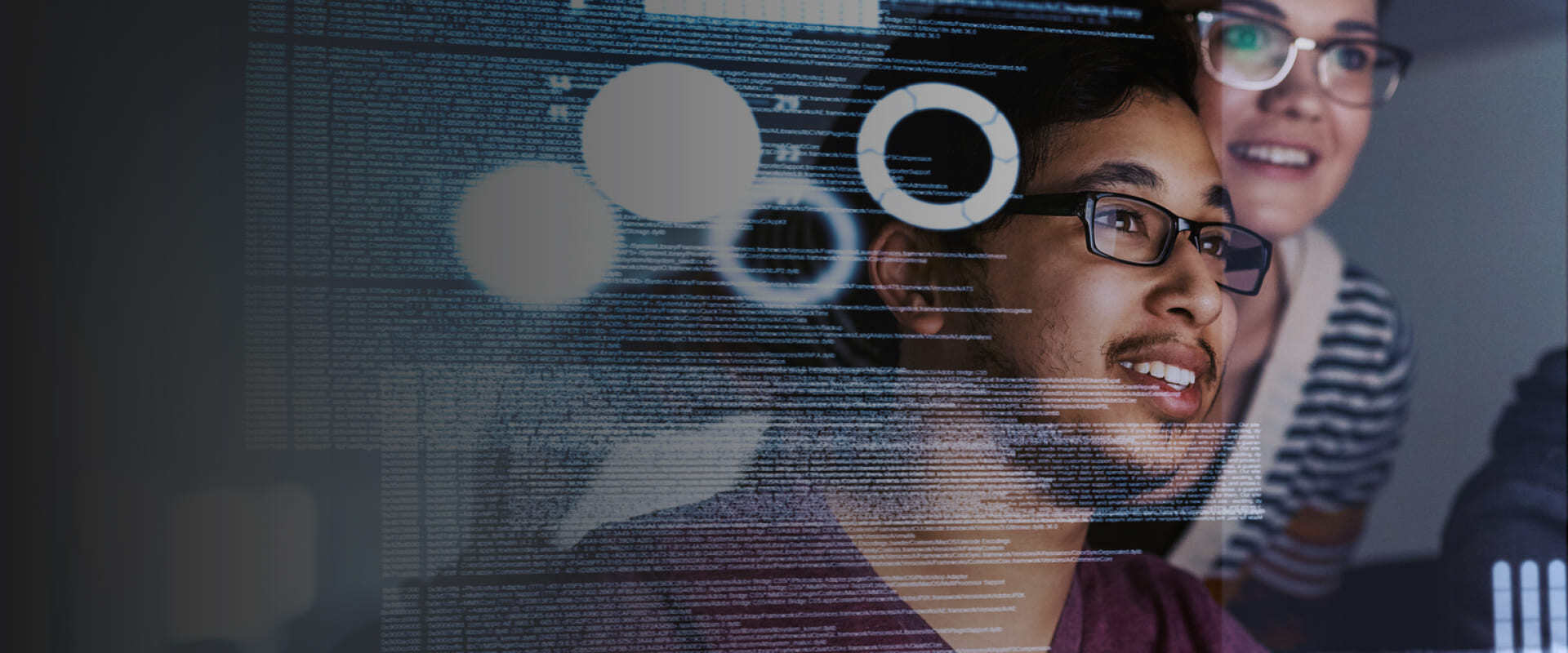Atlas Systems Named a Representative Vendor in 2025 Gartner® Market Guide for TPRM Technology Solutions → Read More

A Practical Guide to Continuous Cyber Security Monitoring


16 min read | Last Updated: 03 Dec, 2025
TL;DR
- Continuous visibility essential: Real-time monitoring watches system and network activity spotting unusual logins, data spikes, and subtle behaviors that signature-based antivirus tools frequently miss
- Multi-layered detection required: SIEM platforms consolidate logs, EDR tracks endpoints, NDR analyzes traffic patterns working together to separate routine noise from actual security risks
- Alert overload overwhelms teams: Untuned systems generate excessive false positives distracting analysts, requiring threshold tuning, contextual rules, SOAR automation, and risk-weighted scoring to reduce noise
- Hybrid visibility gaps persist: Incomplete logging across cloud workloads, remote users, and third-party systems creates blind spots requiring agentless monitors, centralized policies, extended coverage
There is no shortage of headlines about ransomware disrupting hospitals or attackers slipping through third-party vendors. In most of these cases, there were warning signs: network anomalies, unusual login patterns, elevated privileges being misused, that were either missed or never monitored in the first place.
If you are part of a security team, you already understand how chaotic that gap in visibility can become. Once systems are compromised, response time shrinks. Containment gets harder. Forensics gets complicated. And executive teams start asking why a breach wasn’t caught sooner.
This is where continuous cybersecurity monitoring changes the game. Rather than reacting to incidents after damage is done, monitoring helps you stay ahead by watching in real time, correlating behaviors across systems, and prompting action before things escalate.
In this guide, we’ll walk through what cybersecurity monitoring really involves, why it needs to be continuous, and how you can put the right structure, tools, and processes in place to make it effective.
What is Cybersecurity Monitoring?
Cybersecurity monitoring means keeping a constant watch over your systems and network activity to spot anything that looks off, whether that is an unusual login, a data access spike, or something more subtle.
Instead of relying solely on firewalls or alerts, a strong monitoring program digs into the behavior behind the activity. You are looking for things that shouldn’t be happening: someone accessing files they usually do not, connections popping up from unexpected locations, or signs of privilege misuse.
To support that kind of visibility, you will typically use a mix of tools:
- A SIEM platform that pulls data together from across your environment
- EDR software that tracks what is happening on your endpoints
- NDR tools for monitoring traffic patterns that might be hiding threats
Together, these tools help you separate routine noise from actual risk. They also support compliance requirements like HIPAA or PCI-DSS by keeping logs in check and showing auditors that your systems are being monitored properly.
Why Is Continuous Security Monitoring Important?
Attackers do not wait for a scheduled scan. They look for gaps, times when no one is watching, systems are quiet, or alerts are ignored. Continuous monitoring helps you:
- Spot what antivirus misses. Signature-based tools often fail to detect new or customized threats. Continuous cybersecurity monitoring fills that gap by flagging unusual activity patterns.
- Respond faster, contain earlier. The sooner your team sees a threat, the less damage it can do. Monitoring cuts time to detection and time to resolution.
- Stay compliant with regulations. HIPAA, PCI-DSS, and other frameworks require log retention, alerting, and response documentation, all supported by monitoring systems.
- Catch insider threats. Not every breach comes from outside. Monitoring helps you see privilege misuse, data access anomalies, and risky user behavior.
- Maintain visibility across environments. Remote teams, cloud workloads, and hybrid networks make blind spots more likely. A good cybersecurity monitoring system helps close those gaps.
Key Components of Cybersecurity Monitoring
There is no single dashboard or silver-bullet tool that handles everything in cybersecurity monitoring. What works is a layered system, one that pulls in data from across your environment, processes it in context, and triggers meaningful action when something goes wrong.
Below are the core components you’ll need to make that happen:
Real-time data collection
Security teams rely on raw data to understand what is happening inside the environment. That includes logs from endpoints, authentication systems, firewalls, cloud applications, and user activity. The more timely and complete the data, the better the visibility.
Threat detection
Patterns matter. Whether you use rules, anomaly detection, or behavioral analytics, the goal is the same: highlight unusual activity. A login at 2 a.m. from another region, a spike in outbound data, or repeated access failures can all signal something deeper. Detection works best when it is tuned to your environment, not just running out of the box.
Alerting and triage
Once something suspicious is spotted, not every alert needs to go to a person right away. A good system filters out noise and prioritizes what matters. Alerts should be routed to the right tools or teams with just enough context to take the next step. Without that triage layer, even solid detection leads to burnout.
Incident response integration
Monitoring is only as useful as what happens next. If an alert cannot kick off a response, you’re left with a log and a delayed reaction. Connecting your monitoring tools to incident response tools like SOAR platforms, ticketing systems, or custom workflows ensures that action follows detection. Whether it is isolating a device or notifying legal, the handoff should be built in.
Tools and Technologies for Effective Monitoring
The effectiveness of any cybersecurity monitoring system comes down to visibility, timing, and coordination. A collection of tools is not enough; the right combination, properly configured and integrated, helps your team act fast and stay ahead of emerging threats.
Here is a breakdown of core technologies:
- SIEM platforms
Solutions like Splunk, IBM QRadar, or LogRhythm consolidate log data from across your environment, making it easier to detect suspicious correlations. Atlas extends this with compliance-ready dashboards and centralized visibility across complex environments. - EDR solutions
CrowdStrike, SentinelOne, and other endpoint-focused tools track what happens on individual devices in real time. Atlas Systems integrates EDRs with its Managed Detection and Response (MDR) offering for faster detection and immediate containment. - NDR tools
Network Detection and Response platforms such as Darktrace and ExtraHop focus on analyzing traffic patterns. These tools work well with Atlas’s cloud and API security services to close gaps introduced by remote work and third-party integrations. - Threat intelligence feeds
External data sources provide updates on emerging threats, malicious IPs, and attacker behaviors. Atlas embeds threat intelligence across its monitoring and vulnerability management stack to boost situational awareness. - SOAR platforms
These tools streamline the response process. With 24/7 SOC operations, Atlas integrates SOAR workflows into detection systems to enable automatic incident response, escalation, and ticket creation. - Configuration change and tool optimization
Good tools still fail when misconfigured. That is why Atlas includes configuration monitoring and security tool management services to ensure everything is tuned correctly, updated on schedule, and fully aligned with your policies. - Vulnerability and patch management
Platforms like Tenable and Qualys help organizations identify known weaknesses before they become exploited. Atlas enhances this with continuous scanning, automated patch workflows, and tailored risk mitigation strategies.
Common Types of Cybersecurity Monitoring
Attackers do not always break in through the front door. Sometimes, it is the overlooked channels, like vendor logins or employee inboxes, that give them a way in. That is why cybersecurity monitoring systems are built to cover multiple layers of your environment.
Here are the core types of monitoring to consider:
Network monitoring
Network monitoring examines traffic moving into and out of your environment. It flags indicators such as scanning attempts, data exfiltration, or signs of lateral movement using tools like firewalls, IDS/IPS, and NDR platforms.
Before implementing monitoring solutions, evaluate your environment through a thorough network security assessment. This guide to conducting a Network Security Risk Assessment outlines exactly where to start.
Endpoint monitoring
Endpoint monitoring tracks device-level activity on laptops, servers, and mobile devices. EDR systems detect events like file manipulation, privilege escalation, and unusual system behaviors.
To understand how this works in real-world environments, explore our in-depth breakdown of why Endpoint Detection and Response (EDR) is essential for modern security strategies.
Cloud and SaaS monitoring
Cloud and SaaS monitoring observe cloud infrastructure and third-party platforms to detect misconfigurations, unauthorized access, and suspicious behavior.
Application and API monitoring
Application and API monitoring evaluates how apps and APIs behave in real time. This helps security teams spot injection attempts, malformed payloads, or misuse of access tokens. For deeper insight, you can explore our guide on the API security testing process as well as practical steps for mobile application security testing across Android and iOS environments.
Identity and access monitoring
Identity and access monitoring focuses on user authentication, permission changes, and access logs. It catches anomalies such as privilege creep or failed login attempts.
Insider threat monitoring
Insider threat monitoring correlates behavioral signals across users, devices, and data movement. The goal is to uncover subtle, internal risks before they escalate.
Email and web security monitoring
Email and web monitoring review communication channels for phishing indicators, malicious payloads, or unusual download patterns.
Third-party and vendor monitoring
Third-party/vendor monitoring keeps track of how external partners interact with your systems. It looks for anomalies in access frequency, connection origin, and authorization behavior.
Each type plays a role, and the more they work together, the better your defense posture. Gaps appear when visibility is isolated. Integrating these layers into a unified monitoring approach makes detection sharper and response faster.
Implementing a Cybersecurity Monitoring Program
Cybersecurity monitoring cannot succeed on tools alone. Implementation requires planning, prioritization, and sustained operational effort. A structured approach ensures that the system is not just collecting data, but enabling real, actionable security outcomes.
Here is how to implement cybersecurity monitoring in a way that delivers visibility, compliance, and response readiness.
Define clear objectives and monitoring scope
Before choosing tools or setting up alerts, determine what you are solving for. Is your goal to reduce incident response time, meet compliance obligations, or detect lateral movement across cloud workloads? Clarify which risks you want to monitor and where they are most likely to emerge.
A narrow scope (e.g., endpoints only) may be appropriate for smaller environments, while larger or regulated organizations should plan for full-stack monitoring, network, endpoints, identities, applications, and third parties.
Identify critical assets and risk-prone areas
Not all systems carry the same risk. Focus on assets that handle sensitive data, control access, or connect to external environments. This includes identity providers, privileged user endpoints, customer databases, and public-facing APIs.
Map out:
- Data flows (Who accesses what and from where?)
- Dependency chains (What fails if this system goes down?)
- Access layers (Where does least privilege break?)
This analysis informs where monitoring should be most intensive and where blind spots may exist.
Select and deploy appropriate tools
Tooling should align with your environment, not the other way around. Cloud-native businesses will lean on API-based monitoring and agentless scanners. Hybrid environments need integrated SIEM, EDR, and cloud workload protection. On-prem systems may require deeper log analysis and vulnerability scanning.
Key considerations:
- Can tools ingest and normalize data from all required sources?
- Is alert fatigue likely, and how customizable are detection rules?
- Can the platform support real-time response actions?
- Will it meet audit and compliance logging needs?
Configure alerts, thresholds, and automation
Poorly tuned monitoring creates noise, and noise leads to missed threats. Create baseline profiles of normal activity across systems, then define alert thresholds for deviations that matter.
Start with:
- High-value anomalies (e.g., off-hours admin access, privilege escalation)
- Context-rich triage (Who triggered this alert? From where? Using what?)
- SOAR integrations that allow automated playbook execution
Where possible, automate the suppression of false positives and escalation of verified indicators. This frees up your security team to focus on investigation rather than noise reduction.
Train your response team and document escalation paths
Monitoring is only useful if people know how to respond. Document workflows for:
- Initial alert review
- Triage and context gathering
- Decision-making (Is this real? What is the business impact?)
- Containment steps (Isolate, revoke access, trigger downstream actions)
Conduct simulations (tabletop exercises or red team tests) to validate these workflows.
Review, refine, and optimize regularly
Cyber threats evolve quickly, and so should your monitoring. Build in quarterly reviews to audit:
- Detection effectiveness (What are we missing?)
- Alert noise and fatigue metrics
- Response time benchmarks (MTTD and MTTR)
- Tool coverage vs. infrastructure changes (e.g., new cloud assets or integrations)
Use data from post-incident reviews and attack simulations to improve detection logic and response workflows.
Best Practices for Effective Cybersecurity Monitoring
Implementing monitoring tools is only part of the equation. The real difference lies in how those tools are used, and whether the supporting processes are designed to turn alerts into insight, and insight into action.
Here are the operational and technical best practices that help organizations maintain continuous visibility, reduce alert fatigue, and strengthen cybersecurity monitoring systems.
1. Monitor what matters most
Prioritize visibility where the business impact is highest. This typically includes:
- Data repositories (customer, financial, health records)
- Identity infrastructure (SSO, MFA, directory services)
- Critical applications and APIs
- Admin and privileged user activity
Surface-level monitoring across too many systems dilutes response efforts. Focus depth over breadth, and expand gradually as coverage stabilizes.
2. Tune your alerts to reduce noise
Out-of-the-box detection rules rarely match the specifics of your environment. Untuned systems generate false positives that distract analysts and degrade trust in alerts.
Effective tuning includes:
- Suppressing benign but repetitive behaviors
- Creating risk-weighted alert scoring
- Applying dynamic thresholds based on user roles or timeframes
A tuned system reduces MTTD (Mean Time to Detect) without overwhelming your SOC team.
3. Correlate signals across multiple sources
No single tool has full context. SIEMs, EDRs, cloud logs, and IAM systems all contribute partial insight. Linking these signals gives you:
- Context (e.g., suspicious login → file access → outbound traffic)
- Reduced false positives
- Better root-cause analysis
4. Leverage AI and machine learning where useful
Machine learning is not a silver bullet, but it can catch subtle behavioral changes or previously unseen attack patterns. Useful applications include:
- User and entity behavior analytics (UEBA)
- Detection of low-and-slow intrusions
- Noise reduction through pattern recognition
ML models require regular retraining, clean baselines, and feedback loops.
5. Maintain audit-ready monitoring logs
Security logs must be tamper-proof, centralized, and available for audit or forensics when needed. Best practices here:
- Use secure, immutable log storage
- Centralize via SIEM or log aggregation tools
- Retain per compliance standards (e.g., 90 days, 1 year)
Proactive retention ensures you are not scrambling to reconstruct timelines during incidents or audits.
6. Align monitoring with your incident response plan
Every detection mechanism should map to a defined response action. If alerts sit idle with no playbook, they lose value. Best-in-class organizations:
- Connect alerts to SOAR playbooks
- Define containment actions for common threat types
- Test escalations regularly via simulation
7. Validate coverage and effectiveness continuously
Regularly test your detection logic through:
- Red team simulations
- Breach and attack emulation (e.g., Atomic Red Team)
- Review of missed incidents and false negatives
These exercises highlight gaps and feed improvements into detection logic, thresholds, and escalation playbooks.
Challenges in Cyber Security Monitoring
Even the most advanced cybersecurity monitoring systems are not immune to operational and strategic challenges. As threats grow more sophisticated and environments expand, organizations must constantly assess where their visibility breaks down, where alert fatigue sets in, and where process gaps undermine response.
Here are five critical challenges most security teams encounter, and what it takes to mitigate them effectively.
1. Alert overload
Alert overload can overwhelm analysts when systems produce too many notifications without clear prioritization. Tuning thresholds and refining correlation rules help reduce the noise.
What helps:
- Tuning alert thresholds and severity levels
- Creating contextual rules that suppress low-risk events
- Applying scoring logic based on asset value or behavior history
- Using SOAR platforms to triage automatically
2. Lack of skilled personnel
Shortage of skilled personnel remains a key problem. Many organizations struggle to find professionals who can configure tools, interpret threat intelligence, and coordinate timely responses.
What helps:
- Investing in internal upskilling through playbook-based training
- Leveraging Managed Detection and Response (MDR) services
- Automating tier-1 triage through AI/ML tools
- Rotating staff through offensive/defensive exercises to retain skills
3. Tool sprawl and integration complexity
Tool complexity becomes a barrier when different systems operate in silos or require deep customization. Teams need to align tools within a common security architecture to avoid inefficiencies and blind spots.
What helps:
- Standardizing around modular platforms (e.g., SIEM + SOAR)
- Building API-driven integrations to synchronize logs and events
- Prioritizing interoperability during vendor selection
- Centralizing alert dashboards for SOC operations
4. Incomplete visibility in hybrid environments
Incomplete visibility often results from blind spots in hybrid environments or inconsistent logging practices. Gaps like these make it harder to spot persistent threats and respond effectively.
What helps:
- Deploying agents or agentless monitors for cloud workloads
- Enforcing centralized logging policies
- Extending IAM and EDR coverage into remote user environments
- Conducting asset discovery to track unmanaged devices
5. False positives and missed detections
False positives waste time and delay response. Teams that invest in behavioral models, real-time enrichment, and threat intelligence integration can significantly reduce these noise levels.
What helps:
- Using behavior-based detection (UEBA, anomaly detection) alongside signatures
- Regularly retraining ML models and tuning baselines
- Conducting purple team exercises to simulate adversarial behaviors
- Combining multiple telemetry sources for triangulation
Securing What Others Miss with Atlas Systems
Cyber threats do not wait for office hours, and they certainly do not pause for manual review. The speed at which risks evolve demands more than reactive fixes; it calls for a real-time, always-on defense that can anticipate, detect, and respond at scale. That is the role continuous cybersecurity monitoring is meant to play, and it is exactly what Atlas Systems is built to deliver.
With Atlas, monitoring is not just about catching threats. It is about correlating patterns across hybrid infrastructures, translating noise into insight, and turning detection into action. From 24/7 SOC coverage and Managed Detection and Response (MDR) to deep integration with SIEM, EDR, and NDR tools, Atlas Systems enables full-spectrum visibility across endpoints, cloud workloads, APIs, and third-party ecosystems. Whether you are tracking insider activity or monitoring cloud misconfigurations, Atlas ensures no alert gets lost and no anomaly goes unseen.
Start with Atlas Systems’ Complimentary Cybersecurity Risk Assessment, powered by Tenable, and start closing the visibility gaps today.
FAQs about Cybersecurity Monitoring
1. What is cybersecurity monitoring?
Security teams do not rely on occasional checks anymore, they need to keep an eye on system activity throughout the day. When unusual behavior shows up, having continuous monitoring in place helps identify and respond before the issue grows.
2. What tools are typically used for cybersecurity monitoring?
That varies. Some teams start with SIEM to centralize logs. Others lean on endpoint monitoring (EDR) or track internal traffic patterns through NDR tools. These tools are most useful when they are connected. A monitoring system that pulls together endpoint activity, traffic patterns, and log data paints a far more complete picture than isolated alerts.
3. Can effective monitoring reduce the risk of ransomware?
Most ransomware attacks leave traces before the full impact hits. It might be a spike in file access after hours or a pattern of movement between machines that does not follow typical behavior. When your monitoring setup catches these early, there is a better shot at stopping the attack before it spreads.
4. How does continuous monitoring support compliance goals?
If your organization follows regulatory frameworks, monitoring continuously helps with more than just threat detection. It creates a record of system activity that is ready for audits and prevents you from scrambling to reconstruct events after the fact.
5. Does machine learning improve cybersecurity monitoring?
Machine learning can help surface patterns that might go unnoticed, especially in larger environments. That said, it is not a plug-and-play solution. You still need people who can interpret and act on what the system flags.
6. How do SIEM, EDR, and NDR differ in purpose?
Each tool handles a different area. SIEM looks across system logs, EDR follows what happens directly on endpoints, and NDR keeps watch over how data moves across networks.
Related Reading
Blogs
.png?width=869&height=597&name=image%20(5).png)

.png?width=300&height=175&name=Rectangle%2034624433%20(2).png)







.png?width=645&height=667&name=Widgets%20(2).png)






.png)

